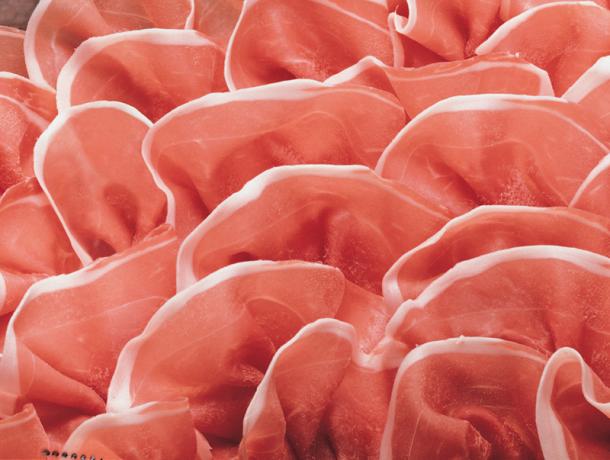The Great Prosciutto Debate: How to Select Italian Cured Ham
What’s more difficult than learning enough Italian so you can order delicious prosciutto? Choosing what kind of prosciutto to purchase!
One of the greatest gifts to mankind is the ability to cure. Curing disease is one achievement and it absolutely deserves the utmost appreciation, but curing ham, now that’s what matters! Any shopping trip to the supermarket in Italy warrants a walk by the deli department to see the plethora of options. In the classic outdoor Italian market, several vendors offer services similar to those delis.
Regardless the location, one of the most daunting tasks is squishing elbow to elbow with the other customers to see what’s behind the counter and ordering sliced meats. In the supermarkets, there is a wall with several well-lit shelves and often glass counters. In the outdoor market, the showcase is under the counter. There are, the neatly arranged meats: cured ham legs, circular to oblong to rectangular tubes of all kinds of salami, cooked hams and turkey breasts, and dinner plate-circumference logs of mortadella – a very gourmet and more delicious version of American bologna, often peppered with pistachio or olive.

hough salami varieties are abundant, the number of prosciutto options can be overwhelming and choosing the right one can be difficult. Cost is an easy signal of quality. Purchasing the least expensive kind may yield overly salty slices that can have funky flavors. The more expensive per kilogram, the more one can assume it will be delicious. But this not always is it the best indicator. Many supermarket and outdoor market prices hover in the 20-30 Euro per kilogram range. Gourmet stores of course offer an entirely different, more expensive league of product.
Ordering the right quantity is not easy too. Getting used to measurements in the metric system is the first step to success, because ordering a half pound just isn’t possible. In Italy, the gram reigns supreme and if a person wants only a taste, as in one or two slices of prosciutto, 50 grams is all that’s needed. Some places offer prices posted “per etto” instead of the kilogram. An etto is simply a measurement of 100 grams.
There will always be the words “prosciutto di” followed by:
- Parma
- San Daniele
- Modena
- Toscano
- Veneto
- Stagionato (aged)
- Cotto (cooked, not cured)
- And many more
When the prices are comparable and understanding the vendor’s explanations are not an option, remember the locations Parma and San Daniele, both known for their excellent prosciutto. Prosciutto di Parma is the saltier version of the two. It goes very well in panini; eating it in a sandwich cuts the intense saltiness. On it’s own, though, it’s still delicious.
When asked about prosciutto di San Daniele, Italians will say it is “più dolce”, meaning sweeter. In actuality, it is not sweet at all. They are just saying it’s not “salty” like the Parma variety. This is the kind best suited for eating by itself or next to a plate of fresh buffalo mozzarella. The lightness of the prosciutto di San Daniele won’t overpower the creamy notes of grass in the cheese. Regardless of your preference, be sure to try both varieties!
